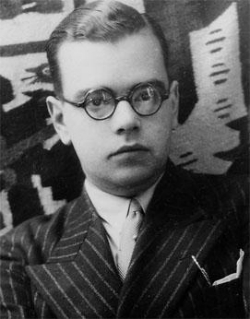THE literature (from latin litera, which means “letter”) is one of the artistic manifestations of human beings, alongside music, dance, theater, sculpture, architecture, among others.
It represents communication, language and creativity, being considered the art of words.
It is, therefore, a very old artistic expression, in prose or verse, that uses words to create art, that is, the raw material of literature is words, just as paints are the raw material of painter.
In such a way, the concept of literature can also comprise the set of fictional stories invented by writers in certain times and places, be they poems, novels, short stories, chronicles, soap operas.
Better understand Literary Periodization in: Period Styles
Literary texts have a very important function for human beings, in a way that they provoke sensations and produce aesthetic effects which make us better understand ourselves, our actions as well as the society in which we live. According to literary critic Afrânio Coutinho:
"Literature is, thus, life, part of life, not admitting that there may be a conflict between one and the other. Through literary works, we come into contact with life, in its eternal truths, common to all men and places, because they are the truths of the same human condition.."
In this sense, we must remember that the concept of literature has been changing over time, and its meaning as we know it today is different from the classic view of yesteryear.
For the Greek philosopher Aristotle, one of the first to focus on studies on this art: “Literary art is mimesis (imitation); is the art that imitates the word”.
Indeed, the concept of literature has been expanded and thus encompassing several texts that encompass the genres literary literature we know today: children's literature, string literature, marginal literature, erotic literature, among others.
Function of Literature
Literary art represents artistically produced recreations of reality, that is, it has an aesthetic value, hence the author uses words in their connotative (figured) sense to offer greater expressiveness, subjectivity and feelings to the text.
Thus, literature has an important social and cultural role involved in the context in which it was created, since encompasses several aspects of a given society, men and their actions and, therefore, it provokes sensations and reflections of the reader. For the French philosopher Louis-Gabriel-Ambroise, Viscount de Bonald: “Literature is the expression of society, as the word is the expression of man. ”
Literary Genres
Literary genres are categories of literature that encompass the different types of literary texts according to their form and content.
Both the concept of literature has changed over time as the literary genre, since the genres literary, approached by Aristotle, were classified in three ways, similar to what we know today, although it has differences.
According to the scheme proposed by Aristotle, the literary genres were divided into: Lyrical (“sung word”), Epic (“narrated word”) and Dramatic (“represented word”).
Currently, the epic genre, which involved historical narratives based on legends and mythology, has been replaced by the narrative genre. Therefore, literary genres are classified into:
- Lyrical Genre: has a sentimental character with the presence of the lyrical self, for example, poetry, odes and sonnets.
- Narrative Genre: has a narrative character, that is, it involves the narrator, characters, time and space, for example, novels, short stories and novels.
- Dramatic Genre: has a theatrical character, that is, they are texts to be staged, for example, tragedy, comedy and farce.
Also read the article: Literary Genres
Literary and Non-Literary Text
Not every text has a literary language, that is, it does not have a fictional, subjective and full of meanings (multi-meaning) character, emotions, sensations and desires. To better understand this difference, let's look at the examples below:
Example 1
“Poem taken from a newspaper story” by Manuel Bandeira
João Gostoso was a street market porter and lived on Babilônia hill in an unnumbered shed
One night he arrived at the bar Vinte de Novembro
drank
Sang
danced
Then he threw himself into the Rodrigo de Freitas Lagoon and drowned.”
Example 2
“The body of the street market porter known as João Gostoso was found this morning at Lagoa Rodrigo de Freitas. Witnesses claim that João was an inhabitant of the Morro da Babilônia and last night, he was at the bar Vinte de Novembro, from which he left drunk. The authorities will analyze the evidence to see if what happened is a homicide or suicide.”
From the examples above we can see the difference between literary and non-literary texts. Thus, the first example involves a literary and subjective language in the form of a poem, which has a writer-induced expressiveness.
The second example informs us about the event, using a language used in journalistic texts, which has an informative rather than a literary function.
Read too:
General Knowledge Questions and Answers
12 courses for those who like to read and write


